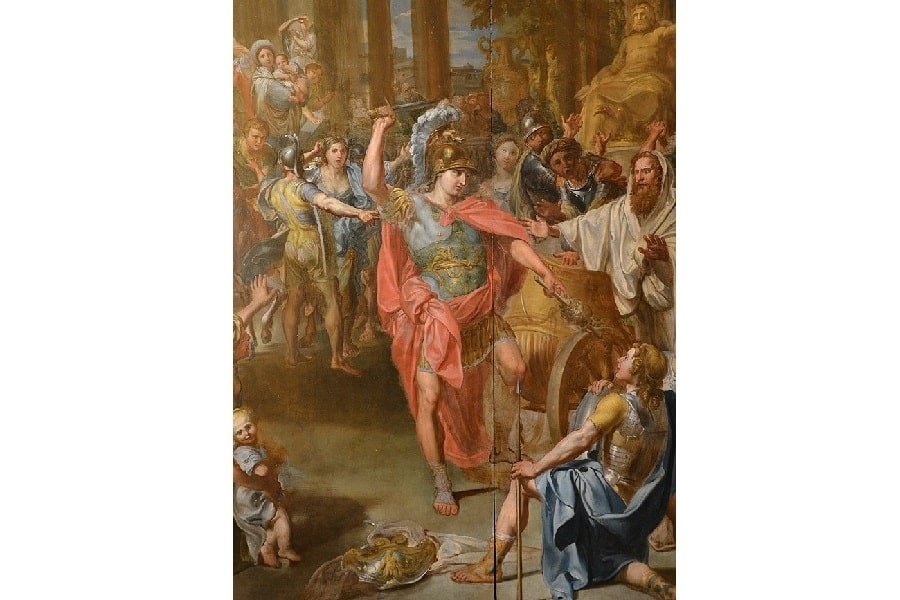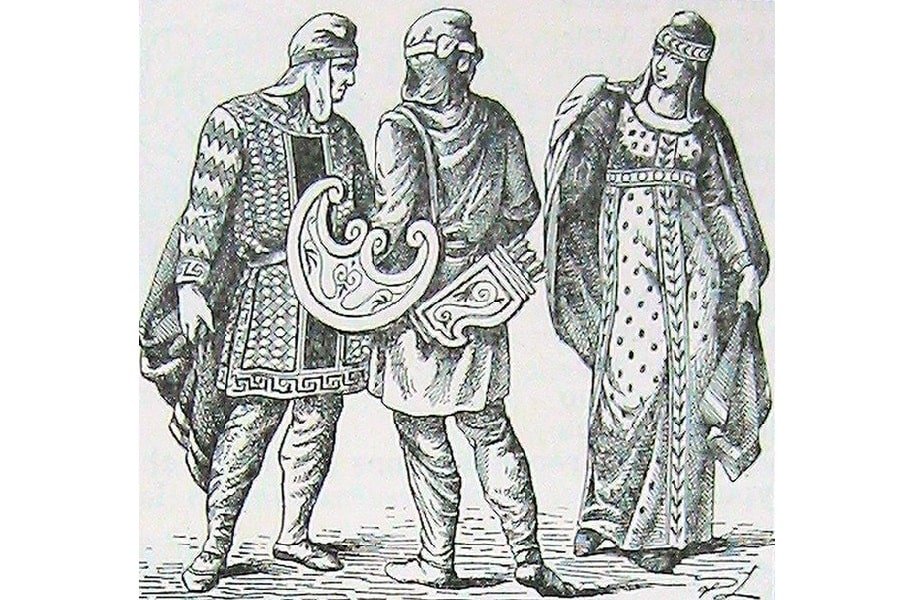The Gordian Knot refers to a story from Greek mythology but it is also a metaphor today. Like with the phrases “open Pandora’s box,” “Midas touch” or “Achilles heel,” we may not even be aware of the original stories anymore. But they are both interesting and informational. They give us a view into the lives and minds of the people of the time. So what exactly is a Gordian Knot?
Table of Contents
What is the Gordian Knot?

Just like the legend about Pandora’s box or Achilles heel, the Gordian Knot is a legend from ancient Greece featuring King Alexander. Alexander was said to be the man who cut open the knot. It’s not known whether this was a true story or simply a myth. But a very specific date is given for the event – 333 BCE. This might hint at the fact that it did actually happen.
Now, the phrase ‘Gordian Knot’ is meant as a metaphor. It refers to an intricate or complicated problem that can be solved in an unconventional way (for example, cutting open the knot instead of trying to untie it). Thus, the metaphor is meant to encourage thinking out of the box and coming up with creative solutions to an intractable problem.
Greek Legend about the Gordian Knot
The Greek legend of the Gordian Knot is about King Alexander III of Macedonia (more commonly known as King Alexander the Great) and a man called Gordius, the King of Phrygia. This story is found not only in Greek mythology but also in Roman mythology. The tale of the Gordian Knot has a few different versions and has been interpreted in different ways.
Gordius and Alexander the Great
The Phrygians of Anatolia did not have a king. An oracle declared that the next man that entered the city of Telmissus in an ox cart would be the future king. The first person who did so was Gordius, a peasant farmer driving an ox cart. Deeply humbled at being declared king, Gordius’ son Midas dedicated the ox cart to the god Sabazios, the Phrygian equivalent of the Greek Zeus. He tied it to a post with a highly intricate knot. This was considered an impossible knot to untangle since it was made up of several knots all fastened together.
READ MORE: 41 Greek Gods and Goddesses: Family Tree and Fun Facts
Alexander the Great arrived on the scene years later, in the 4th century BCE. The Phrygian kings were gone and the land had become a province of the Persian Empire. But the ox cart still stood tied to the post in the public square of the city. Another oracle had decreed that the person to undo the knot would rule over all of Asia. Hearing such words of promised greatness, Alexander decided to tackle the problem of the Gordian knot.
READ MORE: Ancient Persia: From the Achaemenid Empire to the History of Iran
Alexander tried to figure out how to undo the knot but he could not see where the ends of the rope were. Finally, he decided that it did not matter how the knot was untied, only that it was. So he drew his sword and slashed the knot in half with the sword. As he did go on to conquer Asia, it can be said that the prophecy was fulfilled.

Variations of the Story
In Roman mythology, the Gordian knot was to be found in the town of Gordium in Asia Minor. After Gordius became king, he supposedly dedicated his ox cart to Jupiter, the Roman version of Zeus or Sabazios. The cart remained tied there until the Gordian knot was sliced open by the sword of Alexander.
In the popular account, Alexander apparently undertook the very bold action of just slicing cleanly through the knot. This made for more dramatic storytelling. Other versions of the story say that he may have just pulled out the linchpin from the pole where the cart was tied. This would have exposed the two ends of the rope and made them easier to untie. Whatever the case may be, Alexander still used unconventional means to solve a difficult problem.
The Kings of Phrygia
In ancient times, dynasties could rule a land by the right of conquest. However, historians suggest that the Phrygian kings of Asia Minor were different. It has been suggested that the Phrygians were priest-kings. In all the study that has been done on the Gordian knot, no scholar has stated that the knot was absolutely impossible to undo.
So there must have been a technique to both the tying and untying of it. If the Phrygian kings were indeed priests, with close ties to the oracle, then it may be that the oracle showed them the trick of manipulating the knot. The scholar Robert Graves theorizes that the knowledge may have been passed down for generations and known only to the kings of Phrygia.
However, the ox cart seems to refer to a long journey undertaken by the founder of the dynasty to get to the city. This would seem to hint that the Phrygian kings were not an ancient priest class who ruled over the city but outsiders who came to be recognized as kings because of some kind of religious or spiritual reasons. Why else would the ox cart be their symbol?
The Phrygian kings probably did not rule by conquest since their enduring symbol was the modest ox cart and not a war chariot. They were obviously allied with some nameless local, oracular deity. Whether the founder of the dynasty was the eponymous peasant or not, the fact that they were outsiders to Telmissus seems a logical conclusion.

In the Modern Age
The Gordian Knot is used as a metaphor in modern times, especially in corporate or other professional situations. Employees in various businesses are encouraged to use their creativity and initiative to bypass various challenges that they may find at work and in interpersonal relationships in the office.
Apart from being a simple metaphor, various scholars and researchers have been intrigued by the idea of the knot and how exactly it could have been tied. Physicists and biologists from Poland and Switzerland have attempted to reconstruct the knot from actual physical matter and see whether it can be unraveled. So far, such attempts have not succeeded.